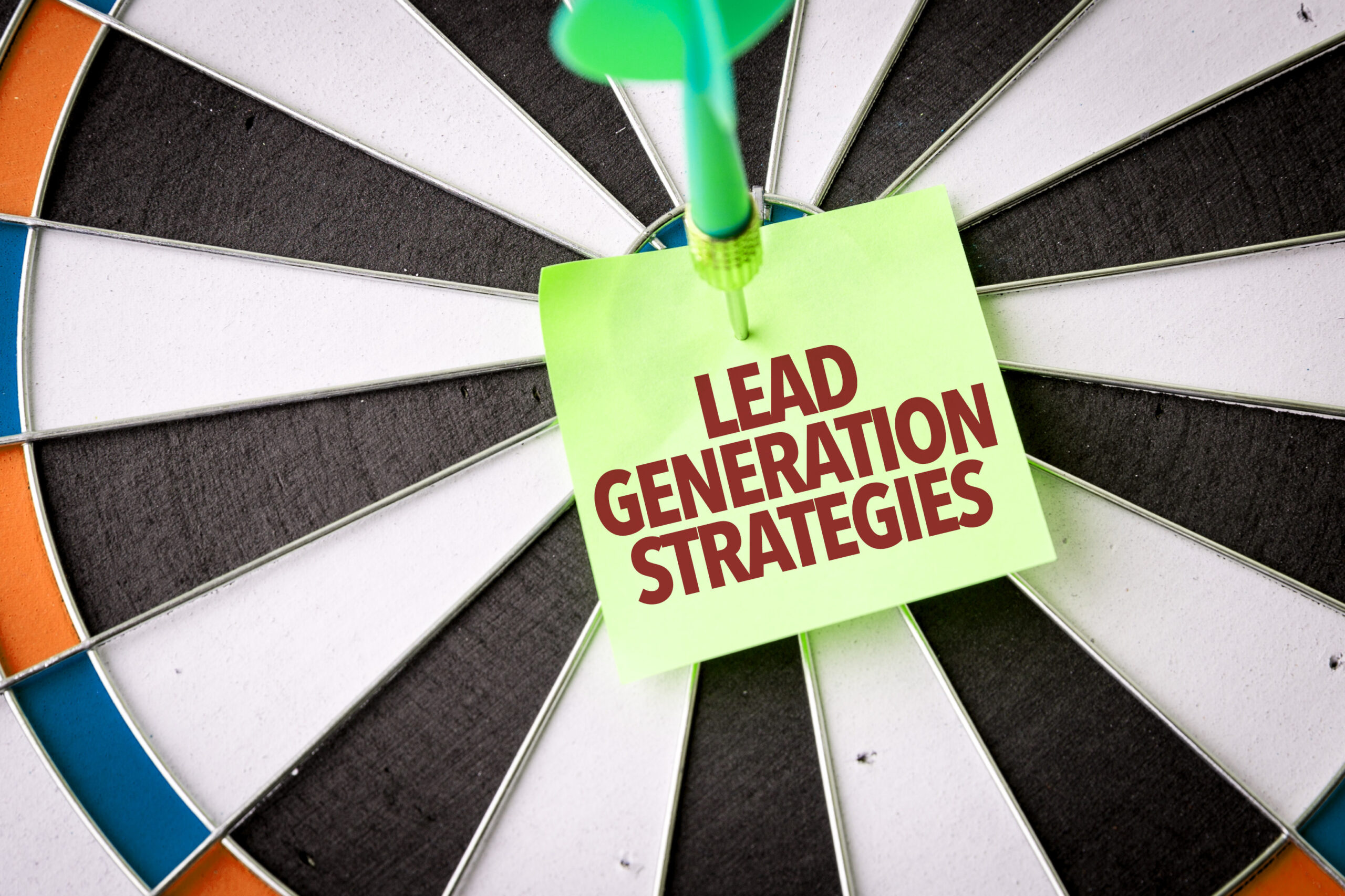Reaching the right customers in a crowded and competitive market isn’t easy. Businesses today need more than just a great product or service—they need a clear strategy to connect with potential buyers and turn their interest into action. That’s where lead generation services shine. These services are designed to help businesses find and engage the right audience, creating opportunities for meaningful connections that drive sales growth.
What makes lead generation truly effective is combining the right tools with a thoughtful approach. From CRM software and email marketing platforms to advanced analytics, businesses can access countless resources to attract, nurture, and convert leads. The key is understanding how to use these tools within a seamless lead generation process that delivers results. In this blog, we’ll dive into the strategies and solutions to help your business capture more leads, close more sales, and build long-term success.
The Importance of Lead Generation Services
Every thriving business starts with one key element: customers. But finding and engaging the right customers isn’t always straightforward. This is where lead generation services become essential. These services streamline the process of identifying potential buyers who are genuinely interested in your product or service, ensuring that your sales and marketing efforts are targeted, efficient, and impactful.
One of the biggest advantages of lead generation services is their ability to fill your sales pipeline with high-quality leads, giving your business a steady flow of prospects to work with. Rather than wasting resources chasing uninterested audiences, businesses can focus their energy on building relationships with people who are more likely to convert. This not only improves ROI but also allows teams to allocate their time and budget strategically.
Types of Tools for Lead Generation
To succeed in lead generation, businesses must leverage the right tools to streamline their efforts and maximize results. These tools are designed to identify, attract, and nurture potential customers, ensuring a seamless journey from interest to conversion. Below are some of the most effective types of tools for lead generation used by professionals today.
1. Customer Relationship Management (CRM) Software
CRM software, such as Salesforce or HubSpot, is a cornerstone for managing and nurturing leads. These platforms centralize customer data, track interactions, and provide insights into the sales funnel. With features like automated follow-ups and segmentation, CRMs allow businesses to personalize outreach and build meaningful connections with potential customers.
2. Email Marketing Platforms
Email remains one of the most powerful tools for engaging and nurturing leads. Platforms like Mailchimp and Constant Contact enable businesses to create targeted campaigns, automate follow-ups, and analyze performance metrics. By delivering the right message at the right time, email marketing platforms help businesses stay top-of-mind with their audience.
3. Analytics and Tracking Tools
Understanding user behavior is critical for optimizing lead generation strategies. Tools like Google Analytics provide valuable insights into website traffic, visitor engagement, and conversion paths. Heatmap tools like Hotjar further reveal how users interact with web pages, enabling businesses to fine-tune their content and design for better results.
4. Social Media Management Tools
Social media platforms are powerful channels for reaching potential customers. Tools like Hootsuite and Buffer simplify the process of scheduling posts, engaging with followers, and monitoring campaign performance. Coupled with social media advertising, these tools help businesses target specific demographics and drive high-quality leads.
5. Lead Capture Tools
Capturing lead information is a crucial step in the lead generation process. Tools like Unbounce and OptinMonster enable businesses to create compelling landing pages, pop-ups, and forms designed to collect valuable contact details. By offering incentives such as eBooks or discounts, these tools encourage visitors to share their information willingly.
By integrating these tools into their strategies, businesses can efficiently manage their lead generation efforts and build a strong foundation for sales growth. Selecting the right combination of tools ensures that every stage of the process—from capturing to converting leads—is optimized for success.
The Lead Generation Process: From Capture to Conversion
Effective lead generation isn’t a one-size-fits-all approach. It’s a carefully structured process to guide potential customers from initial interest to confident purchasing decisions. Below, we break down each step of the lead generation process and explain how businesses can maximize their success at every stage.
Step 1: Identify Your Target Audience
Understanding your ideal customer is the foundation of any lead generation strategy. Without a clear picture of your target audience, your efforts may be wasted on individuals unlikely to convert.
- How to Identify: Start by creating detailed buyer personas that include demographics, preferences, challenges, and purchasing behaviors.
- Tools to Use: Analytics platforms like Google Analytics and social media insights can help you understand your audience’s behavior and preferences.
- Why It’s Crucial: When you focus on the right audience, you save time and resources while increasing your chances of connecting with people who genuinely need your product or service.
Step 2: Attract Potential Leads
Once you’ve defined your audience, the next step is to draw their attention to your business through strategic outreach.
Attraction Methods:
- Content Marketing: Publish blogs, videos, webinars, and downloadable resources that provide value and showcase your expertise.
- SEO: Optimize your website and content for search engines to ensure visibility when potential customers are looking for solutions.
- Paid Advertising: Use platforms like Google Ads or social media ads to target specific demographics.
- Goal: Make your business discoverable and position yourself as a trusted authority in your industry.
Step 3: Capture Lead Information
Attracting leads is only the beginning—you need to capture their information to engage with them further.
Capture Tactics:
- Use gated content like eBooks, whitepapers, or free trials that require users to share their contact details to access.
- Design attractive landing pages with clear calls-to-action (CTAs) to encourage sign-ups or form submissions.
Tools to Use: Lead capture platforms such as Unbounce, OptinMonster, or custom forms on your website.
Best Practices: Keep forms simple and avoid asking for excessive information upfront to reduce friction and improve conversion rates.
Step 4: Nurture Leads
Not all leads are ready to buy immediately. Nurturing them involves building trust and staying engaged until they are prepared to make a decision.
How to Nurture:
- Send personalized emails offering helpful resources, case studies, or updates about your product or service.
- Use social media to share valuable content and interact with potential customers.
Automation Tools: Platforms like Mailchimp, ActiveCampaign, or HubSpot automate follow-ups, making the nurturing process seamless and scalable.
Why It’s Important: Consistent engagement ensures that your business remains top-of-mind when leads are ready to purchase.
Step 5: Qualify Leads
Lead qualification helps determine which prospects are most likely to convert, allowing you to focus on high-priority leads.
Qualification Methods:
- Use lead scoring systems to rank leads based on their engagement levels, such as website visits, email clicks, or demo requests.
- Segment leads by demographics, behavior, or stage in the buying journey.
Tools to Use: CRMs like Salesforce or Zoho can help track and qualify leads efficiently.
Outcome: By identifying high-quality leads, sales teams can prioritize their efforts and increase conversion rates.
Step 6: Convert Leads into Customers
The final step is turning your nurtured and qualified leads into paying customers. This requires a seamless and well-coordinated sales process.
Conversion Techniques:
- Ensure your sales team is equipped with detailed lead insights to personalize their approach.
- Address any objections or concerns leads may have through clear communication and evidence of value, such as testimonials or case studies.
- Offer incentives like discounts, limited-time offers, or free trials to encourage conversion.
Tools to Use: Sales enablement tools like LinkedIn Sales Navigator or outreach platforms can help facilitate conversions.
Post-Conversion: Provide excellent onboarding and customer service to solidify trust and encourage repeat business or referrals.
Each step in the lead generation process plays a critical role in ensuring your business not only attracts potential customers but also builds lasting relationships with them. By following this structured approach, businesses can create a streamlined and effective process that turns interest into loyalty, resulting in sustainable sales growth and improved customer satisfaction.
How Lead Generation Services Drive Sales Growth
Nowadays, simply generating interest in your product or service isn’t enough. Businesses must implement strategies that consistently convert potential customers into loyal buyers to achieve meaningful sales growth. Here’s how professional lead generation services can directly contribute to increased sales and long-term growth:
1. Streamlining the Sales Funnel
Lead generation services help businesses create a clear, efficient sales funnel that guides potential customers from initial interest to purchase. By systematically identifying, attracting, and nurturing leads, these services eliminate inefficiencies and ensure smooth transitions between each stage of the funnel. This streamlined approach minimizes wasted time and resources on unqualified leads while maximizing conversion rates.
2. Targeting the Right Audience
One of the most significant advantages of lead generation services is their ability to target the right audience. By leveraging data and analytics, businesses can define their ideal customer profile and tailor campaigns to meet their specific needs and preferences. This precise targeting ensures that marketing efforts resonate with potential customers, increasing engagement and generating higher-quality leads.
3. Enhancing Lead Nurturing
Not every lead is ready to purchase immediately, so nurturing is such a vital part of the process. Lead generation services provide tools and strategies to build trust and maintain engagement with potential customers over time. Personalized email campaigns, consistent follow-ups, and value-driven content effectively keep your business top-of-mind.
4. Leveraging Advanced Tools and Technology
Lead generation services use advanced tools and technology to optimize every stage of the process. From CRM platforms that organize and track customer interactions to analytics tools that provide actionable insights, these technologies improve efficiency and inform smarter decision-making. Automation features also play a key role, reducing manual workload while ensuring consistent follow-ups with leads.
5. Improving ROI on Marketing Efforts
Investing in lead generation services ensures your marketing budget is spent wisely, focusing on strategies that deliver measurable results. These services target high-quality leads and minimize wasteful spending, improving the return on investment (ROI) for marketing campaigns. By analyzing acquisition costs and conversion rates, businesses can adjust their strategies to focus on the most cost-effective channels, such as email marketing or referral programs.
6. Supporting Sales and Marketing Alignment
One of the most overlooked benefits of lead generation services is their ability to align sales and marketing teams. Misalignment between these departments can lead to missed opportunities and inefficiencies. Lead generation services help bridge this gap by providing shared insights, tracking progress, and facilitating communication. When sales and marketing work together effectively, businesses can better target, nurture, and convert leads.
7. Enabling Scalability and Growth
As businesses grow, the demand for a scalable lead generation strategy becomes essential. Professional lead generation services provide solutions that can handle increased demand while maintaining quality and efficiency. Scalable systems ensure businesses can expand their reach without sacrificing the ability to engage and convert leads effectively.
When executed effectively, lead generation services don’t just fill your sales pipeline; they create a roadmap for long-term success. With the right strategies and tools in place, your business can consistently attract, nurture, and convert leads, positioning itself for sustainable growth in a competitive marketplace.
Ready to Drive Sales Growth with Expert Lead Generation?
Effective lead generation is the backbone of sales growth, but navigating the tools and processes alone can be overwhelming. That’s where Velocity Solutions comes in. Our expertise in lead generation services ensures your business attracts, nurtures, and converts high-quality leads with precision and efficiency.
From leveraging cutting-edge tools like CRM software and analytics platforms to implementing proven strategies for capturing and engaging potential customers, Velocity Solutions is dedicated to helping businesses like yours thrive. Whether you’re looking to streamline your sales funnel, target the right audience, or optimize your marketing ROI, we’re here to deliver results. Contact us today to learn how we can transform your lead generation efforts into a powerful engine for business success!

